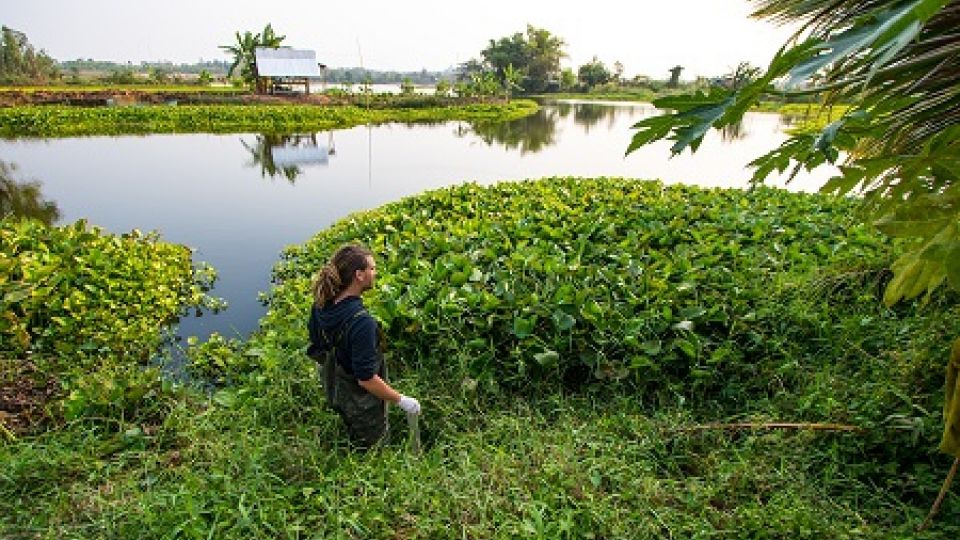Everyday food of hundreds of thousands people living in Thailand is contaminated with mercury, and this happenthrough the consumption of various fish species according to a new report. This common dish ingredient in the Asian country often contains twice the amount of this toxic heavy metal than limits allow. The highest contamination was found in fish from the industrial areas. However, fish sourced from further away and less exposed regions are also vastly affected, and even the national parks show signs of the affects from industry. “The medical and economic consequences of food source contamination and fishermen livelihood should be considered,” suggests Penchom Saetang, the director of Thai non-governmental organization, EARTH .
The study conducted by Jana Tremlova, Ecological Alert and Recovery Thailand (EARTH), and Czech non-governmental organization Arnika confirms bioaccumulation and bio-magnification of mercury. This occurs higher in the food chain which results in a generally higher content of mercury in carnivorous fish. One of them, the snakehead fish is at the same time a valuable food source in South East Asia.
“Alarming 82% of the snakehead fish samples, the most often represented species, exceed the Thai legal standard for mercury in food which together with its frequent occurrence may cause serious health effects for its consumers,” Arnika’s expert on toxic pollution Jitka Strakova informs.
Download the report "Mercury in Fish from Industrial Sites in Thailand"
This situation should get better regulated with a help from Minamata Convention on Mercury which became into force on August 17th, and it was ratified by Thailand in June 2017. This agreement signed by 128 countries and ratified by 75 will help similar areas to deal with mercury pollution. The first official meeting of Minamata Convention will take place between September 24-29 of 2017 in Geneva, Switzerland.
Poisoned national park
Map Ta Phut and Tha Tum - two industrial estates which are the guiltiest for the mercury contamination of the environment in Thailand. Today released a report that names places with disturbingly high concentration of mercury in local fish meat. Levels of the element amount discovered in both indicated that the sources are from locations along the Thai coast (located in Rayong and Prachinburi Province respectively), but other pollution sources are the petrochemical industry and coal power plants.
However unsurprising that heavy industrialized areas occur on the top of the list, there are other sites highly polluted by mercury that are more shocking. Thap Lan National Park and Chantanaburi are far more surprising as they are in rather remote countryside parts with clean environment. Neither of which are in close proximity to any known source of pollution. Nevertheless, a possible explanation has emerged.
“Both of those remote areas are located approximately fifty kilometres from large industrial parks including those in Tha Tum and Map Ta Phut and might be affected by the atmospheric deposition and accumulation of the mercury,” offers Jindrich Petrlik from environmental organization Arnika. He explains this as a possible reason for the evidence. “That would mean the polluters don’t only affect their nearby environment but could easily endanger any further located areas,” he worriedly concludes.
Effect on human body
Authors point out that fish are often recommended to children and pregnant women as natural, healthy food choice, but due to the contamination, it might not be so. Akarapon Teebthaisong, EARTH’s pollution expert, says: “Mercury levels vary between different fish species and areas where they come from. In some cases, we found the amount twice exceeding the 0.5 mg/kg limit applied in Thailand for sea fish, and even much higher exceedance of the limit 0.02 mg/kg applied for freshwater fish.”
The report also reminds that “big carnivorous fish from polluted areas are more likely to have much higher mercury levels when compared to herbivorous fish from the same place.”
Mercury is a well-known toxin that has damaging effects on human health. It has the potential to affect mostly the nervous system, but there is also a risk to other body systems including cardiovascular, respiratory, gastrointestinal, hematologic, immune and reproductive systems. Its neurotoxicity is most damaging for developing organisms, and therefore mercury is dangerous for pregnant women. Fetuses are extremely sensitive to the effects of mercury.
Proof held in human hair
High levels of mercury residues have been objectively found in hair samples of the Thais which confirms the circulation of the element within the food chain.
“The analysis proved the occurrence of mercury in human hair with higher concentration of the element in the samples from the regions of higher mercury content in the environment,” chairman of Arnika, Jindrich Petrlik, confirms.
“Mercury in human hair samples originating from Tha Tum and Map Ta Phut are generally high. A rate of 65 % in Map Ta Put hair samples and 79 % of Tha Tum hair samples contained mercury content above US EPA standard for safe mercury level in hair,” says another study by IPEN and EARTH, whose results were officially published today.
Broadening public awareness
Fish sampling and pollution monitoring in Thailand is a part of the Increasing Transparency in Industrial Pollution Management through Citizen Science project funded by the European Union (EU). It will enable affected communities to generate scientific evidence about industrial pollution causing environmental and health damages, to promote corporate accountability, and to improve citizen access to information concerning environmental issues. The activities are implemented by local NGO Ecological Alert and Recovery - Thailand (EARTH) together with Arnika from the Czech Republic.
This article was prepared and published as a part of the project “Increasing Transparency in Industrial Pollution Management through Citizen Science” funded by the European Union (EU) and co-funded by the Ministry of Foreign Affairs of the Czech Republic within the Framework of the Transition Promotion Programme – a financial assistance programme supporting democracy and human rights using the Czech Republic’s experience with social transition and democratization.
![]()







